Advertisement: Louis Vuitton (click on photo for more info)
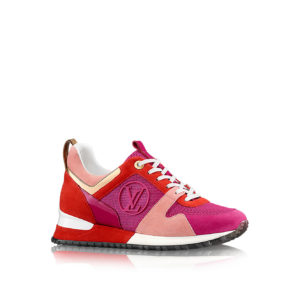
Formerly known as the Female Athlete Triad, which we have written about on this website, symptoms of REDS include, but are not limited to, low energy availability/disordered eating, menstrual disorders, and decreased bone mineral density/osteoporosis. The latter is particularly important. REDS is a major health risk among female athletes, especially among those who believe that being extremely thin or maintaining extreme low body fat will enhance their performance. Consuming inadequate calories to adequately match activity level, however, can induce a negative energy balance. This negative energy balance elevates risk for cessation of regular menses, which is associated with decreased bone mineral density. The latter generally is associated with weaker bones and will place the female athlete at greater risk for injuries, especially stress fractures. This is in addition to putting the athlete at risk for developing long-term health consequences such as osteoporosis or cardiovascular disease.
When observing the general traits of a female athlete that is eating and training properly, there is actually a remarkable difference, especially if you’re trained to look for it. If you’re a coach, you should know the differences.
| Desirable Traits of an Athlete | Traits of those with Eating Disorders |
|---|---|
| Pursuit of Excellence | Perfectionism |
| Commitment to Training | Excessive Exercise |
| Mental Toughness | Asceticism |
| Coach-able | Over-compliance |
| Unselfishness | Selflessness |
| Performance through Pain | Denial of Pain or Discomfort |
Not only might these similar traits increase the risk of energy deficiency onset in female athletes, but also these traits, which are often perceived as desirable traits in an athlete, may complicate identification of an energy deficiency because these signs can be viewed as an athlete’s dedication to her sport. Regarding mental toughness, an athlete may seem be very committed to her sport, but in actuality be severely harming her body.
Much has been written about disorder eating among female athletes and yet, eating disorder prevention programs targeting female athletes have been very limited. But, from the few programs that are active, data have been equivocal. Using university campus studies as an example, there has been an observed increase in students spontaneously seeking medical consultation for REDS.
So, if you have a daughter who is a female athlete or who is one yourself, pay attention to what you eat and do not become a victim to REDS, formerly known as the Female Athlete Triad. It is more important to train and eat properly; everything else will follow a natural path when doing so.
]]>One group of these muscles is the Transverse Abdominis (TrA) muscle. By engaging this area before performing exercises and during exercises, you’ll have a healthier spine and lower back; not only now but in the future. It will help your six-pack abs, but let’s focus on the core, which is more important. For pro athletes, we call this the money maker because the core must be in tip-top shape to be really good at your sport.
The TrA acts to protect your spine and is just beneath the “six-pack abs” or in technical terms, the rectus abdominis, which is why the TrA is often overlooked. But, in terms of the core, the TrA has a much greater role in your core than other ab muscles.
There is a reason the TrA is overlooked; that’s because a great many people have a tough time properly engaging this muscle. How can we engage the TrA? Follow the steps below:
• Lie flat on the floor.
• Contract your stomach so that your belly button moves toward your spine. If you place a small object on your belly button (small saucer, bottle lid, etc.), you can easily observe the downward motion.
• Do not hold your breath during the motion. Breathe normally. Actually, you should be able to carry on a conversation.
• Contract your ab (TrA) muscles for 5 seconds and then, let go. Perform 15-25 reps. It’s a great warm down after a workout.
Work on the Core – Not the Six Pack
Many believe that building that six pack builds the core. It does, but not as much as you think and a great many complain of lower back pain due to lots of crunches and sit ups and as they age. There is a reason for this. When you perform core-training exercises that force your trunk and spine into what is termed excessive flexion (crunches and sit ups are examples), the facet joints and vertebral discs within your vertebral column really take a beating. This same thing happens when excessive extension. After all, these muscles are not like biceps muscles that prefer to be in the shortened position versus an elongated position.
What’s the Purpose of Your Core?
Briefly, the core muscles provide stability. All the muscles in your core and lumbopelvic hip complex work in tandem to provide protection for your spine, especially at the lumbar segments in your vertebral column. Most notably, these areas protect your spine during movements in the form of: anti-rotation, anti-flexion and anti-extension.
It is not about avoiding moving into rotation, flexion and extension during daily activity. It’s about how we should think about our core this way to get a better understanding of what’s truly happening with your spine. So, how do we determine what’s right for us in terms of core strength, routines, etc?
To begin, you need to adjust your spine and find a posture that feels best for your own body. Next, your primary goal should be to achieve proper core stability. If you can stabilize the muscles in your core in the presence of movement, you’ll achieve a greater level of health and a happier lower back that will likely be pain free. It’s not about popping pills to cure that lower back pain, but generally about strengthening your core muscles.
Once you find your proper form, you can begin to emphasize strengthening your core. This is easily done by adding external resistance from the use of resistance bands, medicine balls, dumbbells, cable column, etc. As you develop a good foundation and especially if you’re an athlete, you can begin to add power and explosive movement patterns into your core training routines. A core training progression would follow a step-wise process:
1. Spine Organizations
2. Proper Posture
3. Core Stability
4. Core Strength
5. Power Development
This progression listed above is important; it will help you develop a great core and strengthen your spinal area for long-term health. Let’s try the basic Plank Hold. During this exercise, your goal is to brace your core muscles, create full-body tension and to hold a static position, while gravity and your body-weight try pull at you.
Moving on to a higher level, you can perform an anti-extension exercise. In this type exercise, you are deliberately attempting to avoid spinal extension, especially in the lumbar spine, i.e., you do not want to let your hips dip down toward the floor. To properly perform all of this at the same time, it’s necessary for you to have core stability. This is the real key – core stability is necessary prior to adding elements of strength and power. You need to master exercises at each level prior to moving to the next step in your training progression.
Basic/Beginning Level Core Training Exercises
Dead-Bug
1. Begin lying on your back with your hands extended above you toward the ceiling.
2. Bring your feet, knees, and hips up to 90 degrees.
3. Exhale hard to bring your ribcage down and flatten your back onto the floor, rotating your pelvis up and squeezing your glutes. Hold this position throughout the movement. This will be your starting position.
4. Initiate the exercise by extending one leg, straightening the knee and hip to bring the leg just above the ground.
5. Maintain the position of your lumbar and pelvis as you perform the movement, as your back is going to want to arch.
6. Stay tight and return the working leg to the starting position.
7. Repeat on the opposite side, alternating until the set is complete.
Mountain Climber
1. Begin in a pushup position, with your weight supported by your hands and toes. Flexing the knee and hip, bring one leg until the knee is approximately under the hip. This will be your starting position. Do not let the hips dance as you perform the exercise.
2. Explosively reverse the positions of your legs, extending the bent leg until the leg is straight and supported by the toe, and bringing the other foot up with the hip and knee flexed. Repeat in an alternating fashion for 20-30 seconds.
Plank Hold
1. Get into a prone position on the floor, supporting your weight on your toes and your forearms. Your arms are bent and directly below the shoulder.
2. Keep your body straight at all times, and hold this position as long as possible. To increase difficulty, an arm or leg can be raised.
Advertisement: Rolex (click on photo for more info)
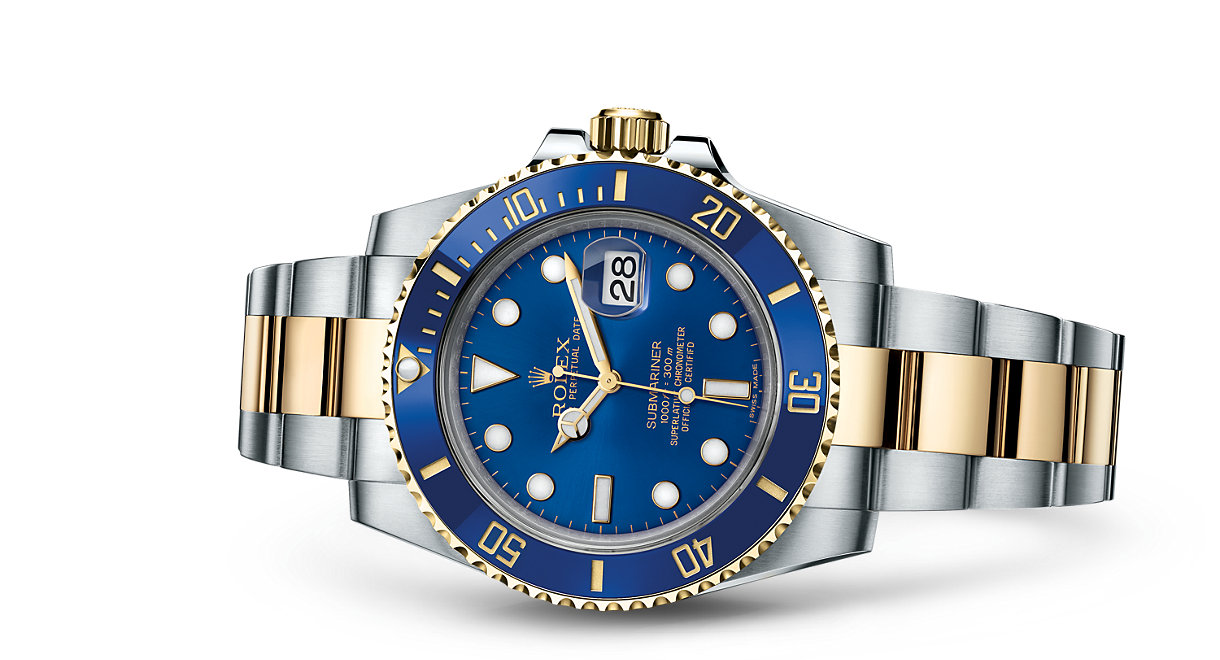
Intermediate Level Core Training Exercises
Once you’ve mastered the basic level section, check out this list of the four core strengthening exercises with a corresponding video demonstration of each one:
Anti-Rotation “Pallof” Press and Overhead Raise
Assume a tall kneeling position; this will force you to engage your glutes to remain tall.
1. Position yourself perpendicular to a cable column (or where you are using a band) and move a couple feet away to allow for tension on the cable. The cable should be aligned with your mid-section. With your stomach tight, chest tall, and shoulders back, slowly control the cable away from your body staying in-line with your sternum until your elbows are almost locked out. Pause for 2-3 seconds and return to start.
2. Return to start and repeat for 10-12 repetitions. Make sure you focus on remaining tight throughout your core and controlling all motion.
3. I find people often use too much weight on this exercise, which promotes unwanted movement. Keep the weight moderate and focus on breathing and staying tight through your core.
Half-Kneeling Chop
1. Clip a rope attachment to the highest level of an adjustable cable machine. Kneel on the floor, with your leg closest to the weights bent to 90 degrees, foot flat on the floor. Extend your arms and grab the rope with an overhand grip, hands shoulder-width apart.
2. Brace your core, squeeze your glutes, and use your torso to pull the rope down and across your body, past your opposite hip. Return to the starting position and repeat before switching to the other side.
3. Avoid rotating your torso during the movement; maintain a slight bend in the elbows; and, maintain a tall and straight spine throughout the exercise.
Perfect Posture Rotating Plank
1. Place your elbows and feet shoulder width apart on the floor, with your legs and body straight in plank position.
2. Rotate your hips, shoulders, and feet while raising your right arm so that you shift onto your left elbow. As you rotate, straighten your right arm up towards the ceiling. Rotate your body and arm back into the starting plank position.
3. Repeat the rotating motion on the right side.
Plank Body-Saw with Valslides
1. Assume a forearm plank position by lying on your stomach with your elbows under your shoulders and a Valslide under each foot.
2. Raise your body so that only your forearms and the Valslides are in contact with the floor.
3. Keep your midsection tight, squeeze your glutes, and slowly push your body away from your forearms.
4. Only slide back as far as you feel comfortable, without piking or allowing your low back to sag. When you can’t go any farther, pull your body back up toward your forearms past the starting position.
5. Repeat for the desired number of repetitions, always keeping your hips elevated in a plank position.
Advanced Level Core Training Exercises
Finally, you’re ready to tackle the advanced section. Here is the list of the three core strengthening exercises with a corresponding video demonstration of each movement:
Side Plank Hold to Row with Hip Flexion
1. Position yourself next to a low-pulley cable machine and get into a side plank position on your forearm, facing the cable. Grab the handle with your free hand and palm facing the floor. Arm should be fully extended.
2. Brace core and drive the elbow past your back, while simultaneously pulling handle to your side. As you do so, pull same-side knee toward chest (to a 90 degree angle or greater). Pause and contract the muscle around your shoulder blade, while holding knee position. Slowly return hand and knee back to starting position.
Advertisement: Louis Vuitton (click on photo for more info)
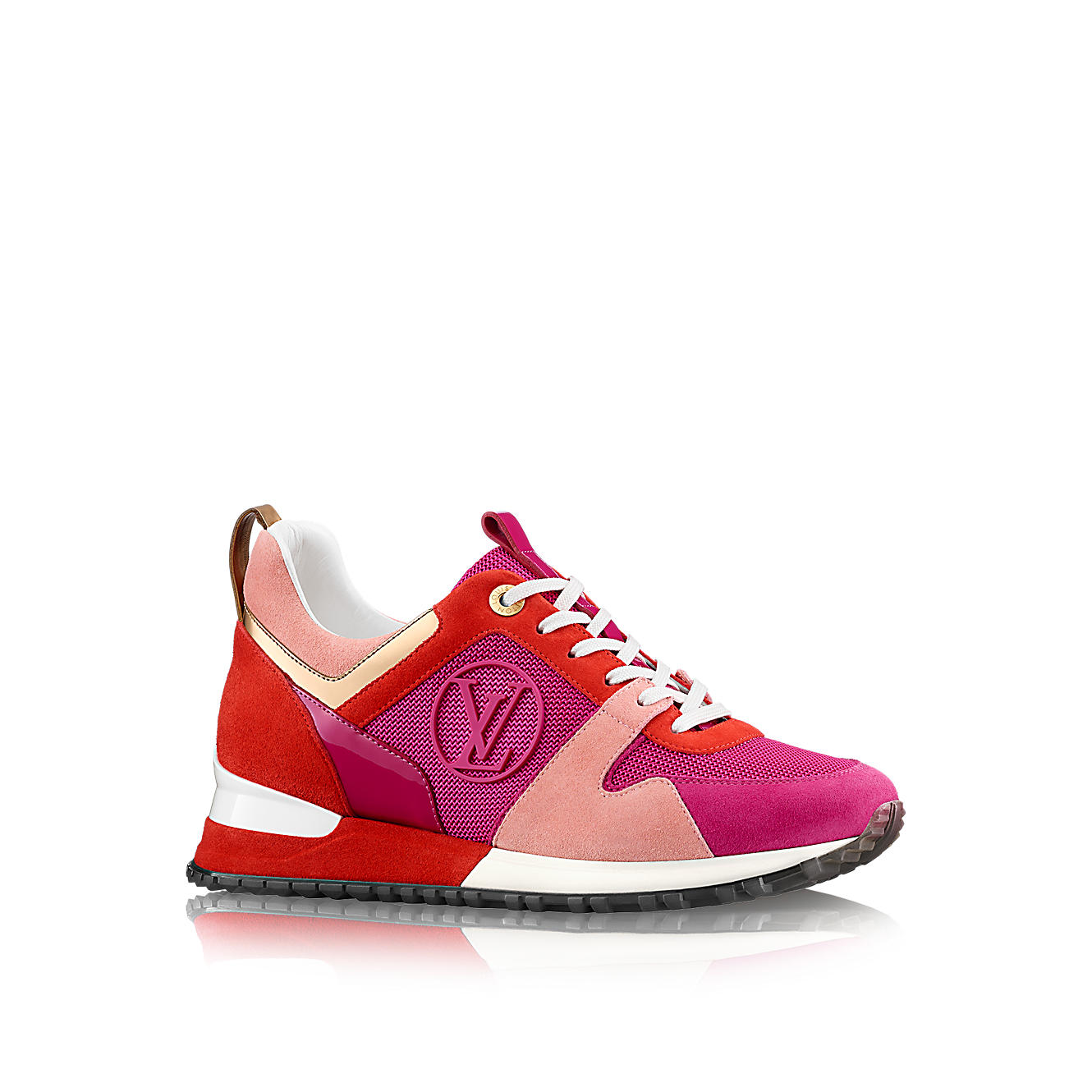
Half-Kneeling Medicine Ball Wall Toss
1. This core exercise isolates your core more and does not allow you to use your legs as much. It is a great exercise for working on power and core stability. Be explosive and quick for a few reps and then switch sides.
2. To do the Half-Kneeling Rotational Throw, set up with one side to the wall and place the foot of the leg closest to the wall flat on the ground. You should be in a half-kneeling position with your front leg up. You may need to open your front knee up slightly toward the wall. Holding the ball in both hands, bring it toward your outside hip.
3. Then, throwing it underhanded, rotate and throw it into the wall. Throw it as hard as you can, rotating toward the wall as you throw. Follow through with your arms.
4. Catch the ball and reload, bringing the ball back outside your hip.
5. Make sure to engage your glutes as you throw to keep you balanced. Also, do not round forward. Keep your back flat and abs engaged as you throw.
6. Complete all reps to one side then switch to half kneeling on the other side.
Farmer’s Carry Variation: Bottoms-Up Kettlebell Waiter’s Hold with Dumbbell Suitcase Hold
1. The bottoms up carry is incredibly challenging for your grip and shoulder girdle. The position of the kettlebell demands a tight grip, stable shoulder, and midsection. You cannot keep the bell balanced in this position without a well braced midsection and strong scapular control.
2. Start by swinging the bell with a tight grip so you balance it with the bottom pointed up. You can use your other hand to stabilize the kettlebell at the top before you start walking. However, to make it extra advanced, carry another kettlebell in your opposite hand.
3. Make sure that are keeping your abs tight and your shoulder blade packed by squeezing down through your armpit and lats. Continue to crush the grip of the kettlebell and walk smoothly. You can make this exercise more difficult by extending the kettlebell forward while keeping your upper back tight. Walk for distance or time for each rep.
So, get out there and train that core. Train for function first, not anatomy. You will find it easier to achieve optimal performance in this manner and you will prevent injury.
]]>Simple Steps for Determining Diet Intake vs Performance Output
1. Everyone needs to know how to ready food labels so that he or she knows the number of grams of each food type, i.e., carbohydrates, fats, and proteins being ingested.
2. Calculate the number of calories needed for yourself on days when you do not exercise (see our diet and nutrition section). This is termed the REE or resting energy expenditure. As a rule of thumb, you can obtain a ball-park figure by multiplying body weight by 10 and adding 200. Let us use a 120 pound person for an example, REE = 120 pound x 10 + 200 = 1400 kcal (calories) energy required per day on days he or she does not exercise. This is just to maintain current body weight.
3. For exercise days, add the number of calories expended for the exercise to those determined from your REE in step 2 above (see “comparison” in the diet and nutrition section).
4. Adjust as needed. If you are slowly losing weight and you do not desire to do this, ingest extra calories on a daily basis. If you are gaining weight, ingest fewer daily calories.
Doing this will ensure that your diet matches your activity level. Thus, you will be the best you can be. For those who are involved in more intense activities, competitive fitness, or professional sports, please read the following section.
Advertisement: CytoCharge (click on photo for more info)
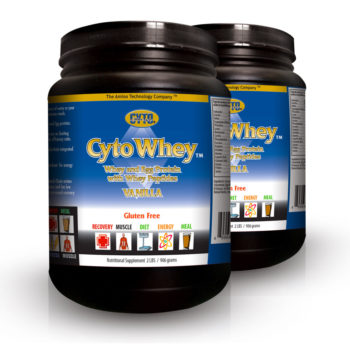
Performance and Calories
I am often asked if one can perform well on a low calorie diet with the primary goal of the individual being to lose weight. The answer is no.
Your performance in any physical activity is directly linked to the energy your body can supply to muscles and cells. What happens when we cannot supply the energy we need to our cells for the activity we are doing? If the activity is done for only 2-3 hours, you will promote fat loss after exercise if this is an occasional event. However, if this is an everyday occurrence, the final answer is that protein will be used for the energy source and muscle mass will be cannibalized. And, it’s well known that the more lean muscle one has, the better able he or she is to control weight and possible obesity.
Again, the key is to balance input of food energy with output of energy used.
For example, muscle fatigue such as “hitting the wall” in running, generally occurs when the body’s internal carbohydrate stores are depleted and there is a shift towards fat metabolism as the energy source for muscles. At this point, maximum energy output is generally limited to approximately 50% VO2 max. (VO2 max. is the region in which oxygen consumption plateaus or increases only slightly with additional increases in exercise intensity, i.e., this is the maximal oxygen consumption). Logically we might assume that if adequate carbohydrates are ingested to offset those expended, that we can maintain our pace indefinitely. Unfortunately this is not the case. Athletes and fitness buffs with low muscle glycogen stores, but high blood glucose levels still experience fatigue at some point, even though the time to onset of fatigue may be delayed by ingesting carbohydrate supplements. We are not sure why this occurs, but it could be related to physical changes in muscle cells since this type of fatigue is more common in the untrained person or athlete.
Fats provide over 50% of the Calories expended during moderate exercise at less than 50% VO2 max., even when adequate carbohydrates (glycogen) are available. As the level of exercise increases towards 100% VO2 max., the proportion of the total energy expenditures replaced by fats decreases. Also, in maximum performance events, where metabolism becomes anaerobic (greater than 100% VO2 max.), fat metabolism ceases and only carbohydrates are available as an energy source; sprinting is a good example of this.
Protein is a maintenance material used to repair muscle (and other) cell injuries – including the micro-trauma that occurs in training.
When designing a nutritional program to supplement the body’s energy stores for an athletic event, the rate of digestion and absorption of foods must be taken into account. The time required for the stomach to start the digestive process, empty its contents into the small intestine, and have the foods absorbed into the bloodstream will directly affect how quickly any food energy will be available for muscles to provide the supplemental energy for exercise.
Four factors influence this digestive process, over which you have some control.
1. Solid vs liquid – liquids are expelled or emptied from the stomach more quickly than solids.
2. Fat content in foods – fat slows the digestive process and delays the availability of any Calories in the food to the muscles. This is why you don’t want to consume fats until at least two hours after exercise.
3. Sugars – a sugar content of more than 10%, especially in liquids, will slow stomach emptying. However, the use of complex carbohydrates, due to a decreased osmotic effect, will offset this somewhat and offers an alternative strategy to maximize Caloric intake to offset the metabolic needs of exercise.
4. Physical activity level – digestion is slowed by any vigorous activity, usually starting at 70% VO2 max. Except in short, all out events such as sprinting, this is generally not an issue. Also, in events such as running, the additional component of mechanical stimulation of abdominal contents from the sport itself slows digestive processes and tract functioning.
The consequences of this are that:
1) The optimal food for a rapid, high energy boost during sustained, fast paced exercises such as running or cycling would be a semi-liquid or liquid carbohydrate with little or no fat.
2) If you are an endurance athletes competing at a lower VO2 max., ingesting a complex carbohydrate with fat added for improved taste (generally in a solid form), will slow emptying from the stomach and prolong absorption for a greater period of time.
Advertisement: Amazon (click on photo for more info)

Carbonation
Carbonation from soda’s and other beverages does not appear to affect the stomachs emptying rate. Various studies have found no difference in the gastric emptying rates of water, carbonated water, or carbonated carbohydrate drinks. Carbonated colas that contain an average of 160 Calories per 12 ounces and a caffeine equivalent to four ounces of coffee, are a favorite drink of many athletes when they are not in the last few weeks before competition.
As sugar concentration increases, several risks arise. For speed athletes, some studies have shown a greater tendency for muscle pulls such as hamstring tears. Endurance type athletes have the risk of nausea and bloating. Most athletes and fit persons can tolerate a 7 to 10% concentration of glucose, but endurance athletes for long events can often tolerate solutions of up to 15% to 20% glucose. Further, the use of polymers will allow more carbohydrates to be ingested and absorbed while limiting somewhat the overall concentration of the solution.
A fluid replacement rate of 500 ml per hour are appropriate for most athletes, cyclists, and runners during prolonged exercise, but rates of up to 1 to 2 liters per hour have been reported in some events such as the Iron-man Triathlon and the Tour DE France. The risk with the larger volumes is hyponatremia. For example, beginning an event with 400 ml of an 18% glucose polymer solution in the stomach and drinking 100 ml each 10 minutes will deliver 108 grams of carbohydrate with 600 milliliter (cc) of fluid each hour.
Following a vigorous exercise, there is what exercise physiologist refer to as a “glycogen window.” Ingesting a carbohydrate supplement within 4 hours immediately following exercise will allow the ingested carbohydrate to be converted into muscle glycogen at about 3 times the normal rate (and “the earlier the better” as some data suggests a 50% fall in the conversion rate by 2 hours and a complete return to normal repletion rate by 4 hours).
The above vigorous activity refers to a long-term event such as running. If you are a speed athlete, the “glycogen window” is narrower and ingestion should occur within 1-2 hours after the event. One hour is likely optimal although no studies have pinpointed the exact time.
Muscle glycogen repletion after two hours of vigorous activity generally proceeds at a rate of 5% per hour. Although it may require up to 48 hours for complete muscle glycogen replacement, most replacement occurs during the first 24 hours (post event). This is important for long-distance running and cycling events. If you are an athlete who trains daily, or are performing in a multi-day event, you can use the “glycogen window” to your advantage to get a jump on the normal repletion process and minimize the chance of chronic glycogen depletion, as well as the fatigue that accompanies it.
There is evidence that muscle stiffness that occurs after vigorous exercise is related to muscle glycogen depletion. Consequently, rapid repletion may have an added benefit of minimizing this effect. As a note, many simple carbohydrate snacks such as chocolate chip cookies contain more than 30% fat. Consumption in large quantities may exceed your planned daily fat intake of a suggested 20-30% of daily Calories.
Advertisement: Don Tolman International (click on photo for more info)

THE PERFECT DIET?
Is there a perfect diet for intense exercisers or athletes? Perhaps, but more importantly, there is significant research and supporting evidence, which show that adequate dietary carbohydrates are necessary for maximum performance. As a matter of fact, at least 10 grams of carbohydrates per kilogram (2.2 pounds) of body weight are required per day. However, it is the absolute amount of carbohydrates that appear to be important, not the percent of total daily Calories that are derived from carbohydrates.
For athletes who perform or compete in multi-day endurance events, there can be an advantage to several weeks of moderate fat intake. The amount of fat consumed should be equivalent to 30% of total daily Calories. However, since good nutrition is a long-term activity, there is no evidence that fat intake for only one day is beneficial in this area. Also, there can be long term health consequences if you consume too much fat each day, i.e., exceed more than 30% daily percentage of your diet.
And what about protein? There is absolutely no evidence that more than two grams per day of protein are beneficial to performance in any athletic activity, including bodybuilding.
In summary, the body’s normal liver and muscle glycogen will support the first 1-2 hours of exercise at 70% VO2 max. without need for supplementation. A good training program will normally postpone the onset of glycogen depletion and fatigue.
Also, ingesting carbohydrates during your event provides an additional source of glucose for energy that will postpone the time at which you may hit “the wall.” However, this is more important for activities longer than 2 hours duration. As a general rule, the body can utilize 60 grams of ingested carbohydrate per hour to supplement muscle glycogen stores. Also, the stomach can handle 1-2 quarts of fluid before nausea occurs.
This will give you some guidelines for developing your own program. Also, using solid food supplements is appropriate as long as enough fluids are consumed with them.
Carbohydrate loading is okay for long-term events like cycling and running, but not for activities such as football and other type team sports or sprinting type activities. When carb loading, eating a high carbohydrate diet for several days prior to the event will maximize internal glycogen stores and prolong the duration of activity until fatigue occurs. However, it will not increase the muscle’s maximum energy output during the event.
The principles of training nutrition and performance are similar to those for any athletic event longer in duration than two hours. Happy training.
]]>
To achieve the ultimate performance level and to become the type athlete you know you can be requires that you focus on three primary areas:
1) Sports Specificity;
2) Overloading; and
3) Range of Motion.
Increased skills in each of these areas, regardless of which sport you participate in, will increase your individual athletic performance.
Sports Specificity
This term implies performing training motions, exercise regimens, and training techniques that mimic as closely as possible the sport or activity you participate in. For example, to improve the range of movement for a specific joint movement, you must perform exercises that involve that joint action. Using the shoulders as an example, you would be performing a quick bench press that would mimic a push-off that is commonly done by linemen in football. The idea would be to press the weight back up as soon as it touched your chest during the exercise, changing from concentric to eccentric contraction as quickly as possible. The movement would be very explosive, not a stop and go as is common practice by the average fitness buff, body builders or power lifters. This manner of exercise also enhances fast-twitch muscle fibers. Also, working on specific joints will increase range of motion for that joint only, not others. For example, practicing shoulder mobility exercises may improve your shoulder mobility but it will not affect your hip mobility. To improve hip mobility, you must perform other exercises specific to this joint.
Advertisement: CytoCharge (click on photo for more info)

To develop general levels of all around mobility as an athlete, you must consider the specific mobility requirements of a given sport. You must analyze the technique of the athletic event, identify which joint actions are involved, and determine which joint needs to be improved in terms of the range of movement. Let us examine two examples: A baseball pitcher may require improvements in shoulder and spine mobility and would require exercises specific to those areas in addition to all around training. However, a 200-m hurdler might need to develop hip mobility. You can see that the training for the latter would be much different for the specific joint(s) and muscle(s) involved.
The amount and nature of mobility training required by each athlete will vary according to the individual, athletic event requirements, and an individuals current range of movement for each joint action required for the event. For best results, you should measure the range of movement or motion for specific joint actions to determine the present range and where you wish future improvement to be. Ascertaining this and setting a goal will yield best results.
Thus far, we have discussed joint mobility. As important as this may be, specificity is an important principle in speed-strength training also, where the exercise must be specific to the type of strength required. Thus, strength is related to the demands of the athletic event. To be able to accomplish this, you must have in-depth knowledge of the predominant types of muscular activity associated with your event, the movement pattern involved, and the type of strength required. There are four types of strength. However, we’ll discuss these at a later date. The result of this effort is, that while you should include specific speed-strength training methods that are specific to your event, once again you should also include exercises that are more general in nature to achieve a well-rounded development of physique, speed, and strength. These exercises may not relate too closely to the movement of your athletic event, but they will give you a balanced development, and provide a strong base upon which highly specific exercises can be built.
Advertisement: Don Tolman International (click on photo for more info)

There are many types of athletic events. Typically, we tend to think of most in forms of moving or throwing heavy objects, moving the body weight quickly such as in running hurdles, or in track and field competitions with the shot put and javelin. There is always the opinion that the heavier the object we can throw or move, the better athlete well be. Such practices have permeated training facilities everywhere and always appear to be at the forefront of the obvious solution. However, we now know from experience that doing so can cause an athlete to unconsciously develop compensatory movements within a technique by adjusting to the weight used in training. As a result, most authorities feel that for throwing events, the training implement should be kept within 15% of the competition weight.
Speed-strength athletes often ask me if there is justification for training slowly by those athletes who move so quickly such as sprinters, ball players, martial artists and others? While it is true that training at low velocity increases low velocity strength substantially, such training has little effect on high velocity strength. However, slow velocity training can be of value in stimulating maximum adaptation within the muscles. Muscle growth, with its subsequent increase in contractile strength, is related to the amount of tension developed within a muscle. As a result, when an athlete performs speed-strength work, i.e., high velocity or speed, the force generated is relatively low and therefore fails to stimulate substantial muscular growth. Consequently, if one performed such exercises extensively, he or she may not be inducing maximum adaptation within the muscles. It is important therefore, for the athlete to use fast and slow movements to fully train the muscles. This means that you must work on training both muscle fiber types regardless of what sport or activity you perform, this is especially true if you wish best results and long-term progress.
Overload
To achieve greatest range of motion, you must overload your muscles and stretch to the end of your range of motion. In active mobility, the end of this range is termed the active-end position. Improvements in mobility can only be achieved by working at or beyond the active-end position. This requires overloading of muscles on a frequent basis. To do this requires using passive exercises and kinetic mobility exercises. Passive exercises involve passing the active-end position. This is where the external force can move the limb(s) further than the active contracting of the protagonist muscles. In comparison, kinetic mobility exercises use the momentum of the movement to bounce past the active end position.
You should note that your muscles will only strengthen when forced to operate beyond the customary intensity. There must be a progressive increase in load to enhance the adaptive responses as training develops, and the training stimulus is gradually raised.
Overloading can be achieved by:
1. Increasing the resistance, e.g., adding 10+ pounds to the weight being used;
2. Increasing the number of repetitions within a set or sets with the weight being used; and
3. Increasing the number of sets per exercise which, increases intensity; concurrently you may also reduce the rest cycle from 60 seconds to 45 seconds or, 30 seconds to 20 seconds depending on weight load used.
Persistence
To maintain and improve you must be persistent. An improved range of motion can be achieved by training, but will be maintained only through regular use of mobility exercises, i.e., persistence in training. If you stop sports specific and mobility training, your range of motion will generally decline with time. It will be fixed to the range achieved by the physical activities you perform. For example, if you train continuously, results will maintain themselves at or near peak levels. However, with a cessation or great reduction in training, your improvements will be limited to that training. In other words, when training ceases, the effects due to training will also cease. This will continue at a rate about equal to 1/3 the rate of acquisition.
Advertisement: Amazon (click on photo for more info)
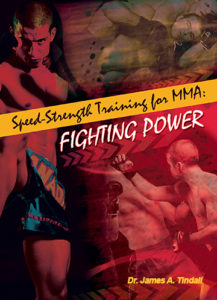
To optimize training, you should train at higher volumes and lower intensity during off season and continue strength training throughout the competitive period with a lower volume, but higher intensity. If you do not, any newly acquired strength will be lost.
]]>


